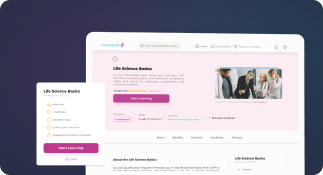NDA (New Drug Application) in Regulatory Affairs
Definition
In regulatory affairs, an NDA (New Drug Application) is a comprehensive submission to the U.S. Food and Drug Administration (FDA) requesting approval to market a new pharmaceutical for human use. The NDA includes all data from preclinical and clinical trials, as well as information on drug labeling, manufacturing, and safety.
The NDA is the final step in the drug development process in the United States and is essential for bringing a new drug to market. It ensures that the product is safe, effective, and manufactured in compliance with regulatory standards.
Detailed Explanation
Purpose of an NDA
The primary purpose of an NDA is to provide the FDA with sufficient information to determine whether:
- The drug is safe and effective for its intended use.
- The benefits of the drug outweigh its risks.
- The drug’s labeling is appropriate and accurate.
- The manufacturing methods ensure the drug’s identity, strength, quality, and purity.
Key Components of an NDA
A standard NDA submission includes the following sections, typically formatted according to the Common Technical Document (CTD):
- Module 1: Administrative and prescribing information (specific to the U.S.)
- Module 2: Summaries of quality, nonclinical, and clinical information
- Module 3: Quality (CMC – Chemistry, Manufacturing, and Controls)
- Module 4: Nonclinical study reports (animal studies)
- Module 5: Clinical study reports (human trials)
When Is an NDA Required?
An NDA is required when a pharmaceutical company seeks to introduce a new drug into the U.S. market. This includes:
- New chemical entities (NCEs)
- New formulations or dosage forms of previously approved drugs
- New indications or changes in route of administration
Types of NDAs
There are several types of NDA submissions:
- 505(b)(1): Full NDA with original clinical data and studies
- 505(b)(2): NDA that relies in part on data not developed by the applicant (e.g., literature or prior findings of safety and effectiveness)
- ANDA (Abbreviated New Drug Application): For generic drugs, not technically an NDA but follows a similar regulatory pathway
Review Process
The FDA review process for an NDA typically spans 10 months for standard review and 6 months for priority review. The process includes:
- Filing Review: FDA determines if the NDA is complete and acceptable for review.
- Review by FDA Divisions: Medical, statistical, pharmacological, and chemistry reviews.
- Advisory Committee: External experts may be consulted for recommendations.
- Action Letter: FDA issues an approval, complete response, or request for additional information.
Examples and Contexts of Use
For instance, when Pfizer developed a new antiviral medication, it had to submit an NDA to the FDA containing all preclinical and clinical data, manufacturing controls, and proposed labeling. Only after thorough review and approval was the drug allowed to be marketed in the U.S.
In regulatory affairs departments, professionals are responsible for preparing, compiling, and submitting NDAs, as well as responding to FDA queries throughout the review process.
Importance in Regulatory Affairs
The NDA process is a cornerstone of regulatory affairs in the pharmaceutical industry. It not only ensures compliance with U.S. law but also protects public health by enforcing rigorous standards for safety and efficacy. Regulatory professionals must maintain up-to-date knowledge of FDA guidance and industry best practices to prepare a successful NDA submission.



